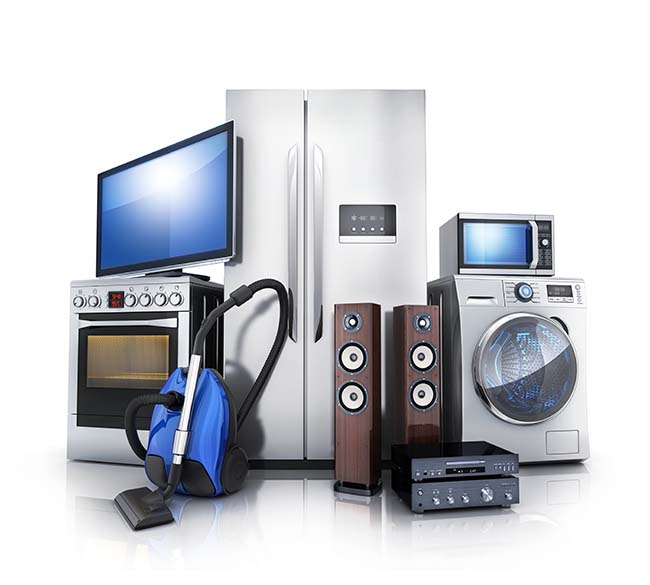Guide to Declaring RoHS Conformity in 2026
For electronics OEMs and contract manufacturers, a proper RoHS declaration of conformity isn't just...
Just like health care itself, the medical device supply chain is ever-evolving.
At its core, the supply chain encompasses every action required to bring a product from proposal to production and beyond. This includes design, prototyping, engineering, manufacturing, testing, packaging, and delivery.
Where does the sourcing team fit in? Everywhere, really. Buyers must be aware of how each link in the medical device supply chain can impact lead time, cost, and quality.
This guide will help you ensure a steady supply of critical PCBs and other components. To unwrap the intricacies of medical technology manufacturing, keep reading – or click a category to jump ahead!

Medical device component shortages are rampant. And it's not just one type of component that's experiencing high demand – it's everything from capacitors to resistors to integrated circuits. To further complicate matters, manufacturers might face any or all of the following issues:
Even though electronics manufacturing providers want to provide fast and easy service for medical electronics components, sometimes extenuating circumstances prolong the time to market in product development, which can irk end customers.
The design team knows it has a great idea that can help people, the bosses know the industry needs it, and you know nothing will go according to timelines.
Sound familiar? Delays in medical device manufacturing are irritating for all departments. Instead of throwing your hands up in defeat, start to learn why these delays happen. This is the first step to developing proactive workarounds.
Current causes of PCB and component supply strain include:
When will the shortage end? We’re probably looking in terms of years, not months. The demand for new-and-improved electronics for medical applications is never-ending, so predicting when supply will catch is a bit of a guessing game.
That doesn’t mean there’s nothing you can do about it. Taking the necessary precautions to weather the storm can go a long way in traversing the shortage landscape.
STOCK UP |
|
If your cash flow situation allows for it, purchasing your components well in advance can alleviate the strain of a component shortage. They’ll be ready to integrate into devices exactly when you need them. This is especially valuable for components with long lead times, which can slow device production and profitability if you’re left waiting. However, buying in advance does have a risk to it. A great component today may be worthless tomorrow if it becomes obsolete. |
FORECAST |
|
Accurately forecasting your component needs can significantly lower the amount you’ll ultimately pay. If you scope out what you’ll need months, or even years, in advance, you can hop ahead of the supply and demand curve. There are also times when global events or market trends create changes in availability. No matter the source of potential slowdown, your electronics manufacturing services provider should always communicate potential obsolescence or shortage risks to you. |
BUILD RELATIONSHIPS |
|
Who do you work with to acquire components? Whether it's with a distributor or the direct manufacturers, we encourage you to build healthy, long-term relationships. The best vendors serve as more than just an order-taker – they become an extension of your business. By doing so, you're much more likely to have transparent discussions about the parts that you need and work together on solutions to overcome sudden component challenges. By this point, you’re probably dual-sourcing your most important components. If you limit medical device procurement to one region or factory and a devastating hurricane or other calamity occurs (see: COVID), it can wreck your supply chain. If you multisource your supply chain needs, you’ll enjoy continuous uptime, more competitive pricing, and the ability to scale up. |
RESHORE |
|
Who do you work with to acquire components? Whether it's with a distributor or the direct manufacturers, we encourage you to build healthy, long-term relationships. The best vendors serve as more than just an order-taker – they become an extension of your business. By doing so, you're much more likely to have transparent discussions about the parts that you need and work together on solutions to overcome sudden component challenges. By this point, you’re probably dual-sourcing your most important components. If you limit medical device procurement to one region or factory and a devastating hurricane or other calamity occurs (see: COVID), it can wreck your supply chain. If you multisource your supply chain needs, you’ll enjoy continuous uptime, more competitive pricing, and the ability to scale up |
Most medical and electronic printed circuit boards are produced overseas. This leads to extended shipping times, communication challenges, and potential quality issues during transit.
When parts are defective, or a wrong component is shipped, delays can stretch out months – sometimes, many of them.
In a post-COVID world, we’re all still witnessing staffing gaps, parts shortages, and shipping backlogs. Nearly every industry saw massive delays and increased shipping rates in overseas manufacturing.
In particular, for the medical industry, the global component shortage has delayed some orders 8-10 months, with legal and medical issues compounding, and medical device OEMs have had to face serious concerns over device obsolescence.
The shortages and bottlenecks in the health care supply chain have made obsolescence risk mitigation much more difficult. Some medical device manufacturers may need to plan several years ahead to ensure their equipment does not become unserviceable.
While obsolesces in medical devices is a major problem for medical professionals and healthcare organizations, the patients are those who suffer the most.
But the good news is that coping with these growing difficulties is no longer complex, thanks to domestic electronics contract manufacturers. While ECMs can’t solve these problems overnight, finding a reputable ECM with experience in the medical industry can protect your patients and reduce the risk of obsolescence.
Medical devices need to be reliable and up-to-date to ensure the safety of the patient. With that said, any electronic device will move through the life cycle and ultimately need parts replaced. If the part happens to be obsolete, that’s when the “fun” starts. Obsolescence management is the way to be proactive and reduce the occurrence of these issues.
The medical equipment life cycle is delicate and complicated. If we had to shave it down to four facts to remember, they’d look like this:

When a part goes obsolete, a component supplier may end production of it before you can properly react. This can lead to major disruptions in your ability to produce life-saving equipment.
Situations like COVID-19 only increase the frequency of supply chain snags. During the crisis, some component vendors shut down, not realizing the havoc they were causing to OEMs. Just one missing component can prevent the shipping of a product.
In highly regulated industries, some components are already hard to come by, making the slightest disruption a challenge:
A customer of ours once had an application that required ceramic capacitors. The component supplier suddenly decided to stop making the part, even though the customer had in-progress orders from multiple major auto manufacturers. The supplier’s response? “Sorry. Too bad.”
Even just a few weeks’ delay in sourcing a medical device component can leave your electronics contract manufacturer unable to move forward.

Just like with aerospace manufacturing, medical device manufacturing requires cutting past a lot of red tape to comply with current laws. While it might be OK to absent-mindedly switch out parts in the rest of the electronics industry, the same is not always true for medical devices. You have to wait for the whole regulatory process to play out every time you make a change to the guts of your device.
If you have an issue with a component on your medical device PCB that the FDA signed off on, you can’t replace it without getting it cleared. Now you have a $10,000 piece of medical equipment that’s waiting for months on a $1 part.

Situations where you have to stop everything due to a component shortage, are deeply frustrating – but some of them are avoidable. There are a few useful approaches that can minimize such risks:

Work with an electronics manufacturing contractor that has experience in medical equipment life cycle management, and the tools to do it. Early on in the medical device electronics design process, your ECM can help you identify opportunities for proactive obsolescence management.
Your ECM can take the lead on managing software like SiliconExpert to track the parts you need for your product. Your partner should also be well-practiced in identifying and sourcing alternative parts that are compatible with your design.
And of course, your PCB supplier should absolutely have ISO 13485 certification.
It probably doesn’t shock you that the medical industry is one of the most tightly regulated in the world. Below are the standards and agencies of which you’ll want at least a passing knowledge.
You may be asking, if the issue is quality, isn’t ISO 9001 – and its emphasis on continuous improvement and customer satisfaction – enough? Not in the medical world.
ISO 13485 is based on ISO 9001 principles, but is a standalone certification specifically designed for the medical device industry. ISO 13485:2016 (the full name of the latest version) adds critical requirements around devices, documentation, and safety.
ISO 13485 focuses on covering your rear end. More specifically, the emphasis is on managing risk – on foreseeing and fixing problems before they occur:
In other words, ISO 13485 represents an exhaustive effort to make sure each component meets rigorous medical device manufacturing standards.
In many cases, the electronics contract manufacturer is ISO 13485-certified, but the OEM ordering that PCB (printed circuit board) assembly isn't. OEMs are strictly regulated by FDA medical device regulatory requirements and have to comply with Current Good Manufacturing Practices (CGMP), which focuses more on the finished product than the guts within.
The spirit of those same guidelines is baked into ISO 13485, so certified manufacturers have shown to auditors that they’ve applied CGMP, too. That’s yet another valuable layer of support behind a medical device manufacturer!
IPC (another standards org you're probably familiar with) lists medical equipment as Class 3 electronics. Unsurprisingly, this is because failure of a circuit board or component could put lives at risk.
A manufacturer doesn’t have to be an ISO 13485-certified company to meet medical device manufacturing regulations. And it doesn’t have to be certified to make and sell medical device components or the finished devices.
However, a medical device manufacturing certification tells everyone – regulators and customers included – that your electronics underwent an objective evaluation by a third party and are proven to be safe.
An electronics manufacturer can be part of a long supply chain. With a specific ISO certification for medical devices on its side, a contractor can ensure its end of the deal meets the highest standards.
Such rigor is not mandatory – you can legally release a product to the market without using a certified supplier. It’s up to you whether to add this layer of quality control.
So, what could go wrong if this “unnecessary” certification isn’t accomplished? What if a component manufacturer doesn’t have ISO 13485 certification and something goes amiss when the device is used in the emergency room?
Chances are the FDA will investigate the OEM. And that means the OEM will need lots of records to verify compliance with regulated processes. If the medical device contract manufacturer can say with confidence that all the necessary records are available, any OEM will sleep easier.
OEMs want proof of a contractor’s manufacturing processes as a way to help validate their final products. A PCB manufacturer’s records must meet strict medical requirements.
Some contractors go a step further in the validation process. They audit their critical component suppliers annually to make sure they meet the contractor’s testing and inspection standards. Working with such a contract manufacturer is a great way to reinforce the safety chain without lifting a finger.

IPC is a global trade organization that developed and manages a set of standards any sourcing team should get familiar with.
The IPC class system outlines acceptability levels for each of its three tiers. Higher classes – like medical equipment – receive more scrutiny from a quality standpoint.
|
Class 1 |
General Electronics |
|
Class 2 |
Dedicated-Service Electronics |
|
Class 3 |
High-Reliability Electronics |
Anyone dealing with PCB procurement in health care should have at least a working knowledge of the IPC class system – it directly affects cost, quality expectations, and supplier selection.
Read More: How to Prep for Class 3 Projects
The Registration, Evaluation, Authorisation and Restriction of Chemicals initiative came into effect in June 2007. REACH is a European Union regulation adopted to protect humans and the environment from toxic chemicals. REACH applies to all chemicals – not only those used in industry, but also in day-to-day living.
A substance falls under the REACH microscope if you use more than 1 ton per year.
U.S. companies that export to the EU must meet REACH registration and authorization requirements. Failing to adhere to chemical compliance regulations could result in your company being shut out of the EU – and possibly several penalties, depending on your country. Fortunately, your electronics contractor should already know how to manufacture with REACH compliance in mind and advise you on risks and workarounds. Some PCB manufacturers will use third-party tools and databases to verify that everything you produce for the EU market is compliant.
More on REACH
RoHS – Restriction of Hazardous Substances – is another EU directive aimed at limiting the use of toxic chemicals. For the same reasons as above, it’s common sense for all electronics manufacturers to adhere to these rules, whether European or not.
Unlike the broader REACH standards, RoHS deals specifically with finished electronic and electric products. The latest version, RoHS 3, bans a total of 10 substances:
RoHS Bans |
Common Uses |
|
Lead |
Solder, cables, glass in CRTs |
|
Mercury |
Switches, relays, LCD backlights |
|
Cadmium |
Batteries, contacts, plastic, pigments |
|
Hexavalent chromium |
Corrosion-resistant coatings, metal housings |
|
Polybrominated biphenyl (PBB) |
Flame retardants in older plastics |
|
Polybrominated diphenyl ether (PBDE) |
Flame retardants in PCB, cables, casings |
|
Bis(2-ethylhexyl) phthalate (DEHP) |
Cable insulation, softener in PVC devices |
|
Butyl benzyl phthalate (BBP) |
PVC in cables, flooring, adhesives |
|
Dibutyl phthalate (DBP) |
Flexible plastic, ink, adhesives |
|
Diisobutyl phthalate (DIBP) |
Cable coating, plasticizers, electronics casing |
The initial deadline for medical instruments to comply with the latest RoHS was July 22, 2021. However, RoHS makes exceptions for certain critical products for which alternatives aren’t yet available. A few medical device categories have also received deadline extensions:
To verify supplier compliance, request test reports and RoHS certificates of conformity.
More on RoHS 3
PFAS (perfluoroalkyl and polyfluoroalkyl substances), also not-so-lovingly called “forever chemicals,” are an emerging issue in medical electronics. They’re popular for their chemical resistance, high temperature tolerance, and nonstick properties.
|
PCBs |
➡️ |
High-performance, high-reliability boards |
|
PTFE-coated wires & cables |
➡️ |
Surgical & imaging equipment |
|
Semiconductors & sensors |
➡️ |
Diagnostics & monitoring |
|
Small parts |
➡️ |
Valves, membranes, seals, gaskets, & diaphragms |
The problem is, these useful substances are a major environmental and health risk. As of May 2025, the Environmental Protection Agency’s TSCA PFAS Reporting Rule requires detailed disclosure on their use. In other words, medical device manufacturers must prove the absence or traceability of PFAS in their parts.
Your procurement team will need to vet PCB and component vendors more carefully. One with design expertise is beneficial, as PFAS-based materials aren’t easy to replace 1:1.
More on PFAS RestrictionsFor electronics OEMs and contract manufacturers, a proper RoHS declaration of conformity isn't just...